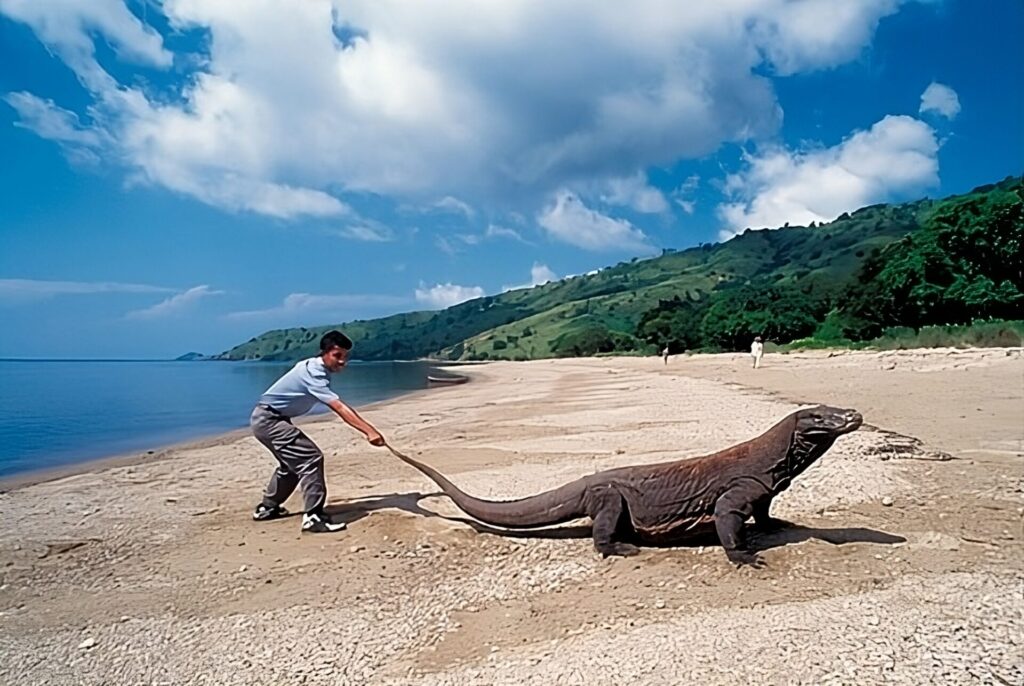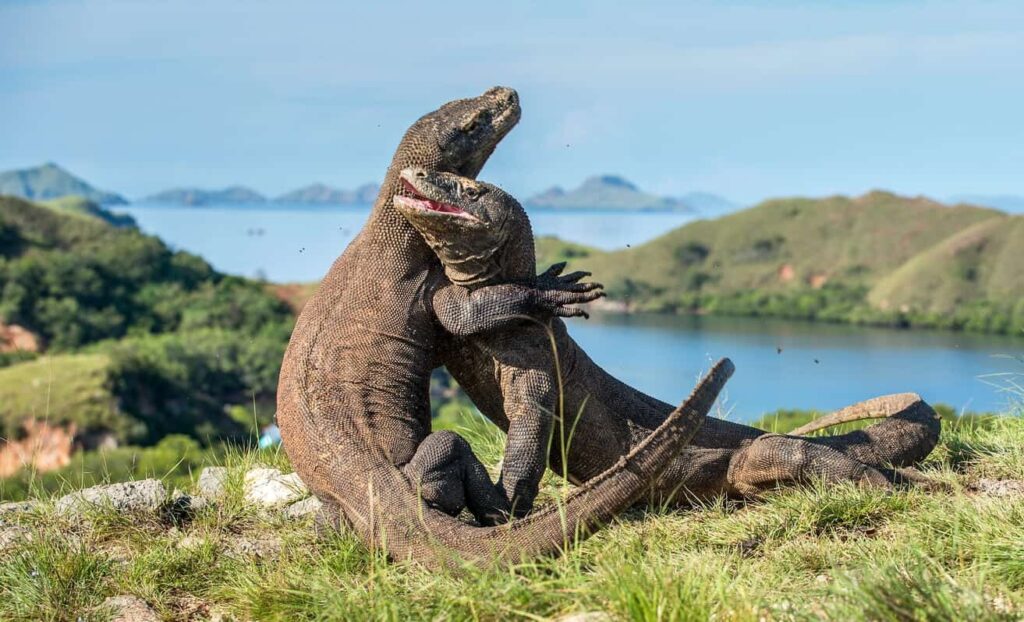
The Komodo dragon (Varanus komodoensis) holds the prestigious title of being the largest living lizard species on our planet. This remarkable creature has captivated the imaginations of nature enthusiasts and scientists alike. One of its most astonishing characteristics is its voracious appetite, as it can consume up to 80% of its body weight in a single meal.
Although the Komodo dragon is primarily a carrion feeder, the sight of this formidable reptile engulfing a deer in one mighty bite is nothing short of awe-inspiring. Despite its reputation as a scavenger, this apex predator is also an efficient hunter.

With a size and weight that can rival that of a small crocodile, the Komodo dragon possesses immense strength and a powerful bite. Its sharp, serrated teeth can tear through flesh effortlessly. Once prey is captured, the dragon uses its muscular body to overpower and subdue it.
While carrion often makes up the bulk of its diet, the Komodo dragon is an opportunist and will not hesitate to seize a live meal. It possesses excellent olfactory abilities, enabling it to detect the scent of a decaying carcass from a considerable distance. By using its forked tongue to sample the air, it can pinpoint the location of potential food sources.

The feeding behavior of the Komodo dragon is truly remarkable. After capturing its prey, the dragon’s strong jaws and flexible skull allow it to swallow large chunks of meat. It can devour up to 80% of its own body weight in one sitting, an astonishing feat for any creature. Once a meal is ingested, the dragon’s digestive system goes to work, breaking down the food efficiently.
The ability to consume such massive amounts of food in a single meal serves the Komodo dragon well in its natural environment. The Indonesian islands of Komodo, Rinca, Flores, Gili Motang, and Padar are home to this iconic species, where resources can be scarce. By devouring large quantities of prey, the dragon can sustain itself for extended periods, reducing the need for frequent hunts or foraging.

It is important to note that the Komodo dragon’s feeding habits are not solely restricted to large prey. Insects, small mammals, birds, and reptiles also make up a portion of its diet. Its opportunistic nature allows it to adapt to various food sources, ensuring its survival in diverse environments.
The unique feeding behavior and immense appetite of the Komodo dragon contribute to its status as a top predator. Despite its ability to consume vast quantities of food, it must balance its energy expenditure and food availability to thrive in its natural habitat.
Encountering a Komodo dragon in the wild, witnessing its sheer size, power, and ability to devour prey, is an experience that leaves a lasting impression. These majestic creatures, as nature’s ultimate survivors, remind us of the incredible diversity and adaptability found in the animal kingdom.

Leave a Reply